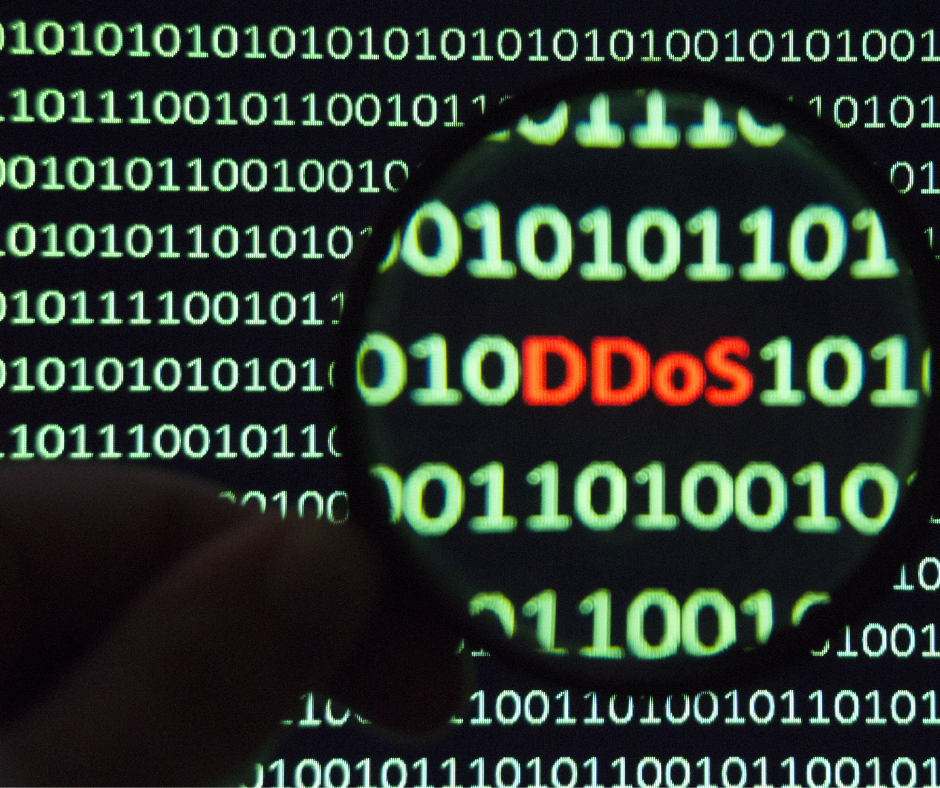Many people wonder about the meaning of DDoS, asking what exactly is a DDoS attack and what does DDoS stand for? DDoS stands for distributed denial-of-service attack. DDoS attacks occur when servers and networks are flooded with an excessive amount of traffic. It’s a malicious attempt to disrupt the normal traffic of a targeted server, service of network by overwhelming the target or its surrounding infrastructure with a flood of Internet traffic.
The goal is to overwhelm the website or server with so many requests that the system becomes inoperable and ceases to function. From a high level, a DDoS attack is like an unexpected traffic jam that clogs up the highway, that does not allow regular traffic to arrive at its destination. In order to prevent DDoS attacks, it’s important to understand what motivates an attack.
What Motivates an Attack?
- Financial: DDoS attacks are often combined with ransomware attacks. The attacker sends a message informing the victim that the attack will stop if the victim pays a fee. It’s worth noting- that sometimes rival businesses will even conduct DDoS attacks on each other to gain a competitive edge.
- Ideological Disagreements: Attacks are often launched to target oppressive governing bodies or protestors in political situations. An attack of this kind is often conducted to support a particular political interest or belief (ex. religion).
- Extortion:Other attacks are used to attain some personal or monetary gain through extorted means.
- State-Sponsored: DDoS attacks are often waged to cause confusion to military troops and civilian populations alike.
How Does a DDoS Attack Work?

These attacks are carried out with networks of Internet-connected machines. These networks consist of computers and other devices (such as IoT devices) which have been infected with malware, allowing them to be controlled by an attacker. These individual devices are referred to as bots, and a group of bots is called a botnet. Once a botnet has been established, the attacker is able to direct an attack by sending remote instructions to each bot. When a victim’s server or network is targeted by the botnet, each bot sends requests to the target’s IP address, potentially causing the server or network to become overwhelmed, resulting in a denial-of-service to normal traffic.
What do DDoS Attackers Target the Most?
Certain systems are particularly vulnerable to DDoS attacks. Attackers will target the following devices in an attempt to gain control of your network:
- End Points: This includes equipment such as mobile devices, workstations and servers- anything that is connected to your network.
- ISP/Cloud Providers:Because these providers service many companies, they are often a target of DDoS attacks.
- Social Media:Instagram and Facebook have both been the target of attacks affecting access for all platform users.
While organizations in any industry are vulnerable, these sectors are attacked the most often:
- Healthcare
- Government
- Internet service providers
- Cloud service providers
How to Identify a DDoS Attack?
It’s not easy to identify a DDoS attack. Hackers aren’t announcing it from the roof tops and business owners might not even notice they have been hit at all. A business owner might just think that it’s hosting is down, when in reality you are the target of a DDoS attack. It’s even more difficult to identify an attack if your website normally has large amounts of traffic. However, there are certain clues that can help you identify such an attack:
- Your logs show an usually huge spike in traffic
- A specific IP address makes the same amount of requests over the same period of time, frequently and consistently
- Your server shows a 503 error, meaning service outage
How to Stop a DDoS Attack?
DDoS attacks can be damaging if not identified and handled in a timely manner. Use these steps to strategically defend your organization:
- Detection: Look for warning signs that you may be a target. Early detection is critical for defending against a DDoS attack.
- Diversion: This involves diverting traffic so that it doesn’t affect your critical resources.
- Filtering: A transparent filtering process helps to drop the unwanted traffic. This is done by installing effective rules on network devices to eliminate the DDoS traffic.
- Analysis: Understanding where the DDoS attack originated is important. This knowledge can help you develop protocols to proactively protect against future attacks.
Cyber Insurance Can Help
General liability insurance policies have exclusions for these types of risks. That’s why cyber insurance is becoming less of an option and more of a requirement to any robust risk management portfolio. Cyber liability insurance can serve as an ideal DDoS attack response plan. When a DDoS attack happens, cyber insurance can help cover the costs of the following:
- Credit/Identity theft- Sensitive data is put at risk, and if stolen, the affected data owners (the individuals affected) need to be notified
- Ransom/Extortion- Criminals may demand a ransom
- Business income- network downtime means a financial loss and can be very expensive
No business can afford to neglect the possibility of a DDoS attack. It has the potential to cripple your operations and cost you a lot of money, as well as brand reputation. Do not underestimate the permanent impact such an attack can have on your business. For help with getting a robust cyber insurance plan that can help you stay protected if your business was to be the victim of a DDoS attack, The Bunker can help! Call us today!
